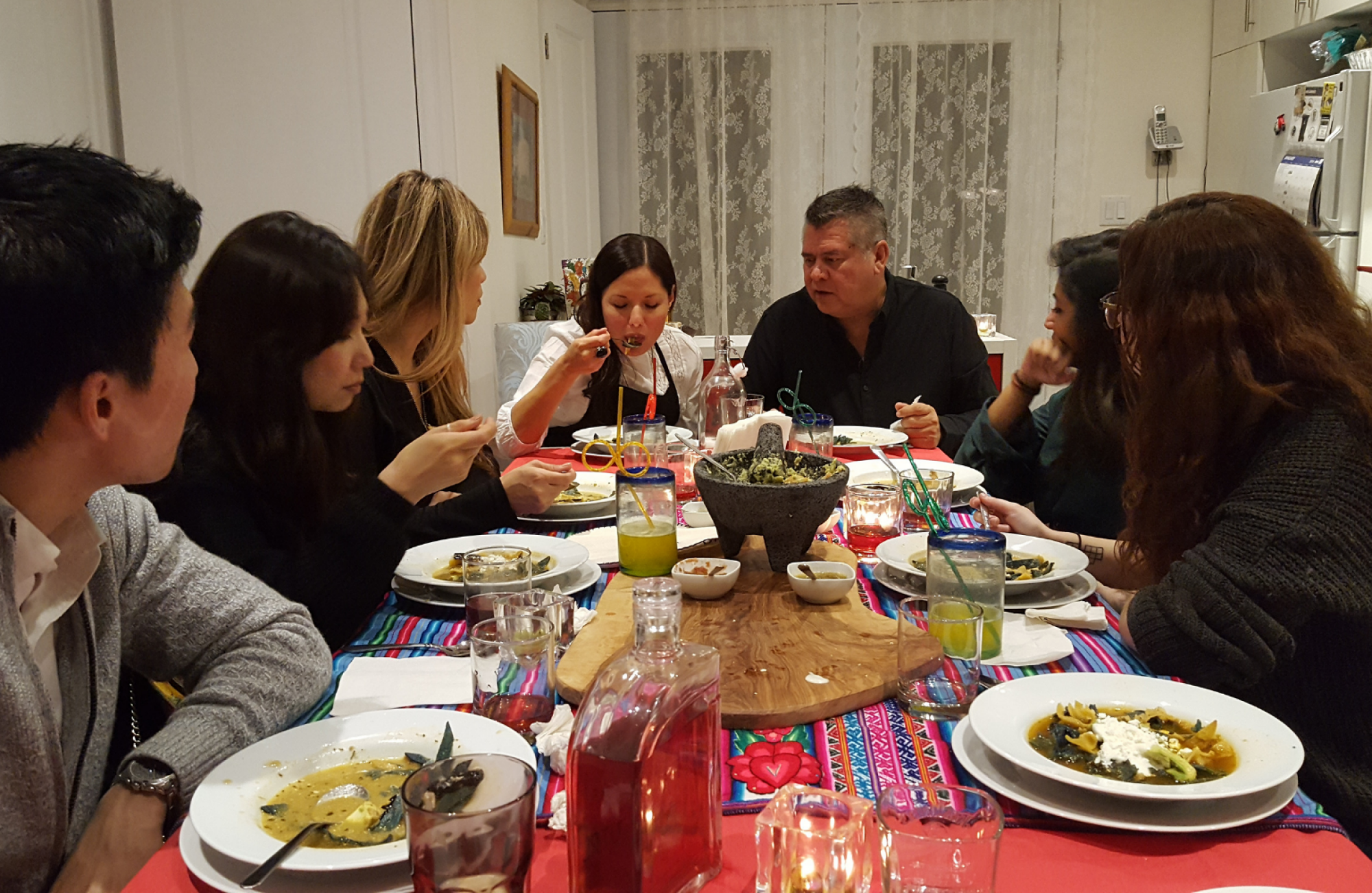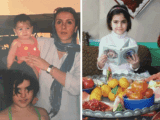Food is not just food. Dining together inspires passion, comfort, joy, guilt. It invites revelation, promises risk. Scientists who parse primitive feasting sites conclude that the shared meal is not just the product of human civilization, but also its definition.
Sure, food feeds. The first feast is at the breast. But food is more than fuel — or even nurturing. Feasting is political. That’s why men have so often sat at the head of the table rather than women. It’s why Mao Zedong, who once ruled China’s Communist party, banned banquets during the Chinese revolution of 1949. It’s the reason the potlatch, a festival of eating, dancing and celebration among coastal First Nations, was made a criminal offence in Canada in 1880, and why it was decriminalized in 1951. And on a lighter note, the domestic frisson of the feast is why seating plans at weddings, bar mitzvahs and Thanksgiving dinners are so fraught.
You may unsubscribe from any of our newsletters at any time.
Feasts are a declaration both of what is and what might be. They trumpet status and, especially these days, are often an aggressive display of one’s world view. Feasts tell us what kind of society we want, what we stand for, how we fit in, who we want to become.
So isn’t it fascinating that today, in this fractious age of creeping dystopia, when the most basic norms of civility are being degraded day by day, breaking bread with strangers is having a moment?

Nova Bhattacharya, a choreographer and dancer, is shelling peas on a blistering late afternoon in her kitchen in west Toronto. It’s the first step in making a Bengali snack for me, a stranger. When I started exploring the phenomenon of strangers dining together, I called Franco Boni, artistic director of Toronto’s Theatre Centre (where I serve as playwright-in-residence), because he has begun holding monthly meals there to nourish the neighbourhood. Talk to Nova, he told me. She cooked a feast for 40 strangers here last fall. And she loves to talk about food.
Bhattacharya lets out a supple laugh when I tell her that. The joke, she says, is that Bengalis are the Italians of India — whenever they are eating one meal, they are talking about the next.
The community meal she made for the theatre ($5 per person) was a Bengali feast in three acts, she tells me, her fingers slowly stripping the peas out of their pods. It was inspired by the recipes of her mother, Lalima, who came to Canada from West Bengal in the 1960s.

The first feast dish was kichuri, made of lentils and rice. It’s the ultimate Bengali comfort food and infinitely variable. You fry up onions and then a bay leaf, cinnamon, cloves and even turmeric if you want to, as the base for the lentils and rice. And then you sauté some tomatoes and add cauliflower and peas. You can keep adding things or leave it alone. You can make it thin and runny like soup or give it the luscious consistency of a Piedmont risotto.
Bhattacharya has a faraway look in her eyes as she talks about it, possibly remembering the rainy days of her childhood when her mother made kichuri accompanied by slices of fried eggplant. Growing up in Canada in the 1970s, the daughter of immigrants, Bhattacharya realized that rituals and food always went together, a way of giving everybody a place at the table. Births, marriages, deaths, housewarmings. It was how community got built. It was how you knew who would have your back if something went wrong.
“But what’s the point of sharing a meal with strangers?” I ask her.
“Why are we alive? Why are we on Earth?” she says. “Yes, we are all individuals, and yes, we all die alone, but while we have a body and a heartbeat and a mind, we can do so much more together than we can do on our own.”

The trend of drawing strangers together over food has bubbled up in many places at once recently, feeding several impulses. Often, they overlap. Often, it is an experiment.
Some people are part of the phenomenon because they long to alleviate loneliness. Others lick their chops at the thought of sampling new cuisines. A few want to harness the ease of the internet to match supply with demand. And for some, the urge is driven by religious faith, by a belief in making the world a better place or by a quest to foster intimate human connections in this increasingly fragmented, digitized world.
Take Kinza, an online platform set up a year ago in Toronto by entrepreneurs Sachin Gupta and Kate Tyshchenko. Gupta, who comes from Edmonton, missed that city’s neighbourhood socializing when he moved to Toronto. Tyshchenko, who arrived from St. Petersburg, Russia, in 2012, was isolated. They hit upon the idea of putting hungry people and home cooks together.
“Food is what unites people. You have to trust people to share food,” Tyshchenko says. “Then we realize we are very similar in the core of us, whether we’re Russian, Middle Eastern or something else. We all have the same problems.”
Gupta fondly recalls a Mexican dinner Kinza held. A business executive made the feast in his Toronto kitchen. Hibiscus tea. Pan-fried tortillas with beans and strips of meat for appetizers. Chicken mole as a main course. The participants were a little awkward at first, and then, he says, the conversation just started flowing. It was magical.
“People are willing to open up, but they need avenues to do so,” he says. “We need to count on people and, especially, we need to feel counted upon.”
So far, Kinza has held about 60 dinners with more than 20 hosts for 300 people who didn’t know each other. Most diners said the prospect of good food was the big draw, plus the novelty of eating with strangers. Gupta and Tyshchenko paused the effort in the summer to figure out a sustainable business model.
Other organizations are set up mainly to be an alternative to restaurants. Eatwith.com, a “social dining” app that began in 2014, now has headquarters in Paris, Barcelona, Tel Aviv, San Francisco and London. It’s something like the Uber of dinner. Instead of driving you in their car, your hosts cook for you in their kitchen. Since its launch, Eatwith has put 150,000 strangers at family dining tables in 130 countries.
Then there’s Brittany Harman, 22, who launched Supper with Strangers in Halifax three years ago with a friend from summer camp, Matt Scott, 23. Freshly returned from Uganda, where her parents were missionaries, Harman was shocked to realize that she had been walking by Halifax’s homeless people without really seeing them. She started offering to buy them a meal at a restaurant of their choice and eating along with them.
The idea was to get to know people who live on the street. It was also “a great opportunity to share Jesus,” she says. But that doesn’t mean she wanted to proselytize or try to fix anyone’s life. “It’s not to convert people. It’s to love them,” she says.
Her idea has caught fire. Today, as many as 20 university student volunteers meet once a month in downtown Halifax to spend their own money sharing a restaurant meal with a stranger. Some have a religious intent while others don’t. The enterprise is not affiliated with a church. Programs inspired by Supper with Strangers have also begun in Fredericton and Moncton, N.B., and in Hamilton.
Often, the homeless participants choose a hamburger at McDonald’s or a sandwich at Subway because many who live on the street don’t feel comfortable in fancier restaurants. No matter where they eat, though, the conversations are rich.
“It’s very raw. Everyone’s just kind of open with each other. You just share your life for a night,” Harman says. The effects extend beyond the table. “We’ve seen a lot of minds change about what it means to be homeless,” she adds.
Even Loblaw Companies Limited, Canada’s largest grocer, is in on the trend. Last year, it launched a campaign to encourage people to eat dinner together, including with strangers. An award-winning video promoting the idea features a young woman and her roommate setting up a dining table in the hall of their apartment building after work and inviting neighbours to eat with them.
Gradually, the hall fills up with groaning tables and smiling neighbours sharing food as a woman sings, “What the world needs now is love, sweet love.”
In a new phase of the campaign this year, Loblaw is urging employees — its own and those of other businesses across Canada — to eat lunch together. It’s a bid to re-establish the “ancient human practice” of sharing meals, the firm says. Benefits? Bridging cultural divides and helping make the workday more bearable. The video it made on this topic (song: I Got You, Babe) has already been watched millions of times.

Bhattacharya has finished shelling the peas and is now chopping cilantro into tiny pieces as she tells me about the second dish she made for the theatre feast: ghoogni, a spice-laden concoction of lamb and chickpeas. She cooked the meat slowly until it fell off the bone, stewed it with chickpeas and cumin until it was dark-tinged and rich and then slathered it with mustard oil, a staple of West Bengali cookery.
Her mother, who went to the feast, was a little sniffy about the ghoogni. The meat, she informed her daughter, was cut just this much too big. Bhattacharya laughs again. She glides out of her chair and reaches for a framed picture to show me — her mother, busy at work decades ago in her own kitchen in Halifax. The image is like a talisman, taking pride of place in the kitchen her daughter now cooks in. Food is heritage. It is identity.
I’m watching her chop. It’s rhythmic, instinctual, like the breath of a sleeping child. There’s nothing hurried about it, no labouring, no tension. Same thing when she starts on the grape tomatoes and a thumb-thick knob of green onion to add to the peas.
It’s cooking as meditation. Or maybe inspiration. Whenever she is choreographing another performance piece, she brings together her team for a homemade meal, cooking up a new show, mixing the flavours and textures for dance.
She opens a box of Rice Krispies and scatters the cereal among the vegetables. Again, the laugh. When she was a child, this use of the iconic cereal alarmed her because it wasn’t what they did with it on television, she says. Over top it all, a slick of mustard oil, mixed nonchalantly. She dishes some out for us in small bowls and hands one to me with a spoon. It’s bhelpuri, the Bengali equivalent of popcorn, she says.
Flavours burst in my mouth. The whip of mustard oil, the crunch of puffed rice and fresh peas, the linger of cilantro. But it’s not just the tastes. What I’m savouring is the feeling of being cared for.

A survey last year found that nearly one in five Edmontonians felt socially isolated, a phenomenon linked to poor mental and physical well-being. So in February, the city launched a pilot program called “Hello, Let’s Eat.” People can apply online for kits of plates, cups, chairs and other party hardware for gatherings of up to 24.
“Communities that are more connected and resilient seem to fare better,” explains Chelsey Anseeuw, a City of Edmonton social planner with the Urban Isolation and Mental Health Council Initiative.
The city had a goal of fostering 15 to 20 parties in the first year. There were 13 by the end of July, ranging from block parties to multicultural events. This includes a potluck for 100 that Danny Hoyt organized in June at Giovanni Caboto Park, the heart of Edmonton’s Little Italy. Neighbours, many who had never spoken to each other before, shared pasta puttanesca, orzo salad laced with olives and feta, and cream-filled cannoli for dessert, among other treats. People showed up with platters of food made from cherished recipes. The feast lasted three hours. “I think people feel isolated in urban environments,” says Hoyt, development co-ordinator for the Viva Italia District Association. Events like the potluck “help reopen a discussion that has been quietened.”
Or sometimes, they launch a discussion that might never have begun. Last September, Bri-anne Swan, community minister at the United Church’s Living Presence Ministry in East Gwillimbury, north of Toronto, began holding monthly potlucks in her home to introduce neighbours. She lives in a new development, peopled mainly by newcomers to Canada of various faith backgrounds. “People who moved here wanted to feel connected with their neighbours, but they didn’t know how to do it. The potlucks are the catalyst,” Swan says. “I can see the shift in how this community was a year ago versus now.”
The dinners have led to a WhatsApp group to deal with the practicalities of being a new neighbourhood. Now the mayor attends every other dinner, happy to answer questions. Food, Swan says, lowers some sort of barrier. It carries its own truth. And she’s secretly tickled that food has become one way to upend the notion that Christianity is limited to what these newcomers witness at the televised rallies of U.S. President Donald Trump. Not all Christians see themselves as “the” people. Some are “a” people. It’s a gentle, even radical, difference. And it’s manifested in potlucks. “We are not about making more little Christians,” Swan says. “Our only purpose is to help make people’s lives better.”
Bhattacharya’s third dish for the theatre feast was a dessert: payesh made from condensed milk, thin rice noodles, rosewater and pistachios. It wasn’t crazy sweet, she says, but it was decadently delicious. Her body almost seems to hum with the memory of it.
The feast was a success. There wasn’t a scrap of food left, which she takes as the ultimate compliment.
But she’s still not finished feeding me. She is working on a new production and was brainstorming earlier in the day with her sound scorer — over lunch, of course. She has laid out leftovers: a barbecued duck breast flecked with curried chickpeas, resting on a lightly grilled apricot half, topped with a caramelized baby onion. It’s set on a small handmade rectangular plate the colour of the Mediterranean Sea.
I am trembling. The tender flesh of the meat melts into the slight char of the apricot and onion. A slashing of duck fat lends the whole thing an unholy sumptuousness.
I thank her. She is philosophical. “I think we all need to belong,” she says. “And it’s not just for yourself, but it’s creating an environment for it to happen for other people.”
This story first appeared in The Observer’s October 2018 edition with the title “Feast.”















